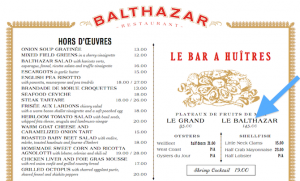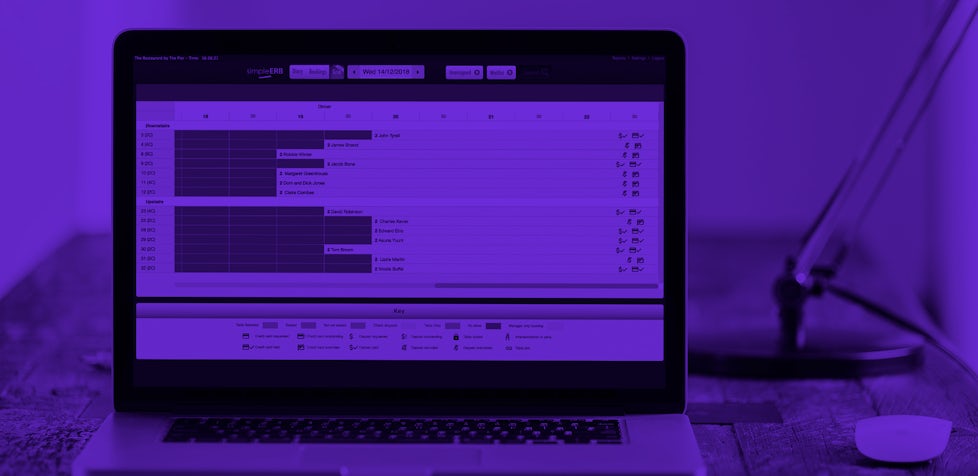How pricing strategies can boost your restaurant profit

Restaurant menu pricing can be something of a minefield.
There’s food and staff costs to consider, all while manoeuvring the tricky balancing act of attracting customers vs satisfying the bottom line.
Tried and tested pricing strategies such as supplements on dishes and lower priced lunch and pre theatre menus are always available.
But when we stumbled across this article on Help Scout, with excellent pricing strategy ideas, it got us thinking how these could be applied to restaurants.
Let’s take a look.
Similarity can cost you sales
According to research from Yale, if two similar items are priced the same, consumers are much less likely to buy one than if their prices are even slightly different.
In one experiment where researchers had users choose to buy (or pass and keep the money) two different packs of gum, only 46 percent made a purchase when both packs were priced at 63 cents.
Conversely, when the packs of gum were differently priced—at 62 cents and 64 cents—more than 77 percent of consumers chose to buy a pack.
This is worth keeping in mind when planning your restaurant menu.
Maybe you could experiment with different priced menus, such as a la carte presented alongside pre theatre and lunch.
Or try different cuts of steak at different prices.
Utilise price anchoring
And how to present these different priced options? Right beside each other!
Three courses for a fixed price point seems like a huge bargain when it is placed beside the more expensive a la carte menu.
In a pricing study from Harvard Business School, which evaluated the effects of price anchoring, researchers asked subjects to estimate the worth of a sample home. Pamphlets provided to the subjects included information about surrounding houses; some had normal prices and others had artificially inflated prices.
Both a group of undergraduate students and a selection of real estate experts were swayed by the pamphlets with the higher prices. Anchoring even worked on the professionals and had an influence on what estimate they gave the house!
By placing premium products and services near standard options you can create a clear sense of value for potential customers, who will then view your less expensive options as a bargain in comparison.
…But make sure to test different levels of pricing
In the book Priceless: The Myth of Fair Value, author William Poundstone examined the purchasing patterns of consumers on a selection of beer. In the first test, there were only two options available: a regular option at $1.80 and a premium option at $2.50.
Four out of five people chose the more popular premium option. But could adding a third item and price point increase revenue by targeting those looking for a cheaper option? The researchers tested this by adding a $1.60 beer to the menu.
In the second test no one bought the $1.60 beer, four out of five people bought the $1.80 and one of out five bought the $2.50 beer. In the third test, the researchers took away the $1.60 and added a $.340 instead.
This proved to be the most profitable result. 85% of customers bought the $2.50 beer, 10% bought the $3.40 beer and 5% bought the $1.80 beer.
These examples clearly show important it is to test out different brackets of pricing. This is especially true if you believe you may be undercharging. Some customers are always going to want the most expensive option, so adding a super-premium price will give them that option and will make your other prices look better by comparison.
End prices with the number 9
An old classic. But does ending prices with the number 9 really cause people to buy more?
According to the journal Quantitative Marketing and Economics, the answer is a resounding yes.
Prices ending in 9 were so effective they were able to outsell even lower prices for the exact same product.
In comparing the prices $35 versus $39 for women’s clothing, the study found that the prices ending in 9 were able to outperform the lower prices on average by over 24 percent.
Conclusion
As we stated at the beginning of this article, restaurant menu pricing can be an overwhelming task.
If one thing can be taken from Help Scout’s article is that careful consideration combined with constant revaluation can reap dividends for restaurant profits.
Continue to test different price points and different methods to ensure your profit margins are healthy while making sure customers leave your restaurant smiling.

